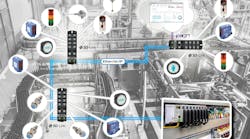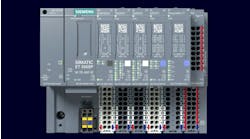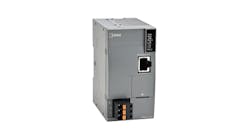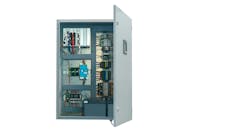Early fault detection and simple plug-and-play field replacements make IO-Link attractive for design and installation
July 31, 2024
Chris Kregoski is an integration specialist at AutomationDirect. He spent nearly a decade as the owner of Woodwest Controls, a small system integrator, servicing start-ups in malting, brewing, distilling and water treatment industries.
What are the advantages of IO-Link in terms of diagnostics?
Chris Kregoski, integration specialist, AutomationDirect: In addition to the large amount of process data available cyclically, faults can be identified easily through diagnostic information messages. This includes device faults, such as memory or processor failures, or process faults like empty pipe detection. Comprehensive diagnostics reporting increases overall system reliability and boosts customer confidence in the process as a whole.
How does IO-Link handle multi-sensor devices? Can I configure and access data from individual sensors within a single IO-Link device?
Chris Kregoski, integration specialist, AutomationDirect: Multiple sensor readings from a single sensor are updated cyclically into the process data communicated from an IO-Link device to an IO-Link master and then on to a host like a programmable logic controller (PLC). This process data can vary in length.
What cable topology options are available with IO-Link? Can I use daisy-chain connections, or is a dedicated point-to-point connection required for each device?
Chris Kregoski, integration specialist, AutomationDirect: IO-Link devices can't be daisy-chained, so a dedicated cable will be required between each IO-Link device and the associated master. An IO-Link master can attach to a number of IO-Link devices, and masters can be daisy-chained with EtherNet/IP communications and power cables, which reduces field cabling and installation costs on a machine.
How does IO-Link integrate with different fieldbus protocols commonly used in automation systems?
Chris Kregoski, integration specialist, AutomationDirect: One IO-Link master we offer, for example, communicates using EtherNet/IP. Other IO-Link masters are available with a variety of fieldbus options, such as Modbus TCP, Profinet and AS-i. The user or designer simply needs to choose an IO-Link master that is compatible with the host device or controller.
What are the cost implications of implementing IO-Link compared to traditional wiring methods? Is the upfront cost of IO-Link devices offset by long-term benefits like reduced wiring complexity and improved diagnostics?
Chris Kregoski, integration specialist, AutomationDirect: Wiring IO-Link sensors typically requires less cabling than traditional sensors, as these connections are aggregated at the IO-Link master that can be installed in close proximity to the sensors themselves. Therefore, the longer run consists of a single power/communications cable set. Daisy-chaining multiple IO-Link masters, as needed, can further improve the cost advantage of IO-Link. Additionally, because many IO-Link devices offer multiple types of sensor data at once, multiple traditional sensors can be replaced by a single IO-Link sensor, adding further savings in cabling, plumbing, and vessel penetrations.
Anything else that you'd like to add about IO-Link?
Chris Kregoski, integration specialist, AutomationDirect: IO-Link brings significant advantages to the table, offering advanced functionality without significantly increasing sensor cost. Early fault detection and simple plug-and-play field replacements add to the list of benefits, making IO-Link an easy choice for your next design and installation.
Tell us about your organization’s state-of-the-art IO-Link offerings.
Chris Kregoski, integration specialist, AutomationDirect: AutomationDirect offers a large portfolio of IO-Link modules and field devices, including Stride and Murrelektronik IO-Link master and hub modules, photoelectric and proximity sensors, signal towers, flow and pressure transmitters, and much more. The Endress+Hauser Picomag flow meter is an example of an advanced sensing device that leverages IO-Link to provide much more data than simply fluid flow. This sensor also supplies the temperature and conductivity measurements, as well as sensor status, all over a three-wire M12 connection.
Sponsored Recommendations
Sponsored Recommendations






